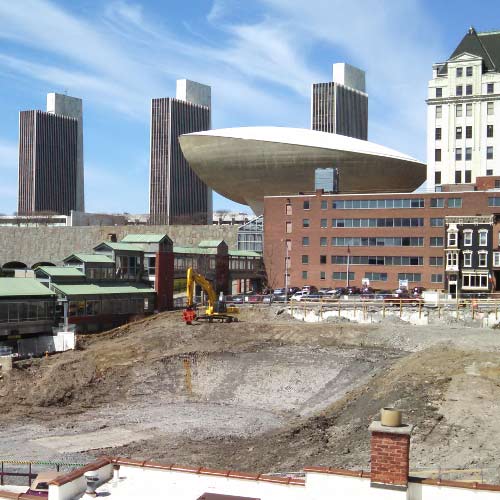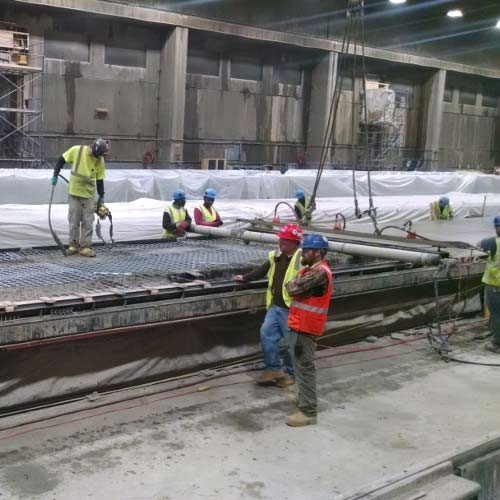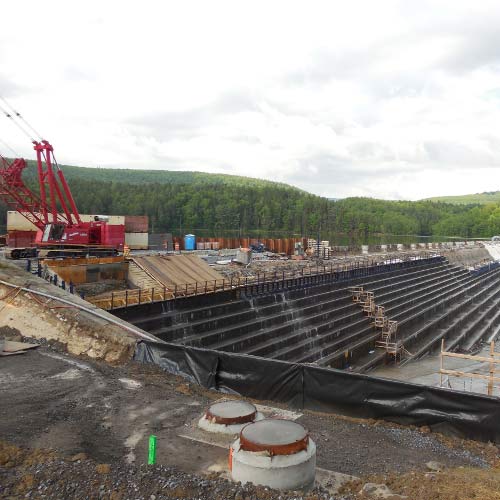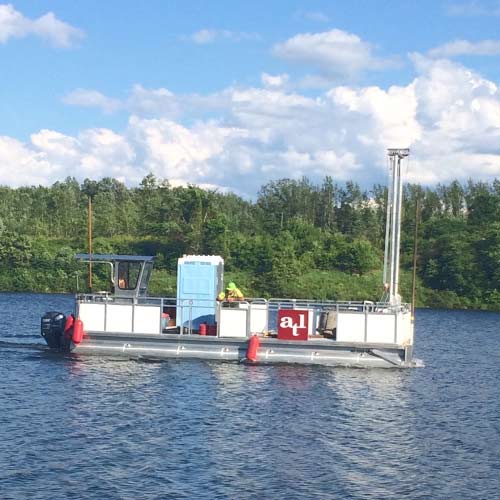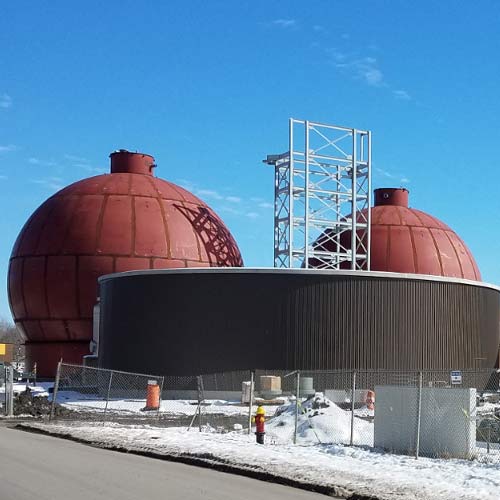Click the following link to view the PDF of this paper: Hot Weather Concrete

Steven N. Moore, PE
Senior Engineer
Atlantic Testing Laboratories
The American Concrete Institute (ACI) defines ‘Hot Weather’ as high ambient temperatures, high concrete temperatures, low relative humidity, high wind speed, solar radiation, or any combination that will impair the quality of concrete due to accelerated moisture loss and/or cement hydration. Most summer days in New York State would qualify as ‘Hot Weather’, using ACI’s definition.
The best approach for mitigation is to control the concrete temperature and protect fresh concrete from rapid moisture loss. Producers often cover aggregate stockpiles as protection from solar radiation. Alternatively, stockpiles may be sprayed with water, typically well water, which averages about 45°F in the Northeast. Controlling the aggregate temperature is a common and economical practice, since lowering the aggregate temperature by 2°F will lower the final mix temperature by approximately 1°F.
Controlling temperatures and moisture loss during and after placement is equally important and can be achieved through planning and preparation. Placing concrete in the early morning is advantageous, especially for flatwork placements with large, exposed surface areas. Moist curing with spray foggers, applying sheet membranes or curing compounds, and/or covering flatwork will protect placements from moisture loss. Vertical placements, such as bridge abutments, should be protected at the top surface to avoid rapid drying and shrinkage. Additional mitigation methods include using chilled mix water, replacing water with ice chips or flakes (equal parts by mass), and nitrogen cooling, which is more popular in southern states.
ACI also recommends avoiding rapid heat loss/gain, which is defined as more than 5°F/hour or 50°F in 24 hours, since this could lead to thermal shock and excessive cracking. Additional information and guidance can be found in ACI 305R-20, “Guide to Hot Weather Concreting” (updated in 2020), and ACI 305.1-14, “Specification for Hot Weather Concreting” (reapproved 2020).
ATL, a WBE certified company, can develop concrete mix designs, perform laboratory trial batches for mix verification, apply the Maturity Method to estimate in-place concrete strength, and monitor internal curing temperatures using embedded thermocouples.
For more information, contact Steven Moore, PE at 518-383-9144, info@atlantictesting.com, or visit AtlanticTesting.com.
|
ASSOCIATED SERVICES |
 |







